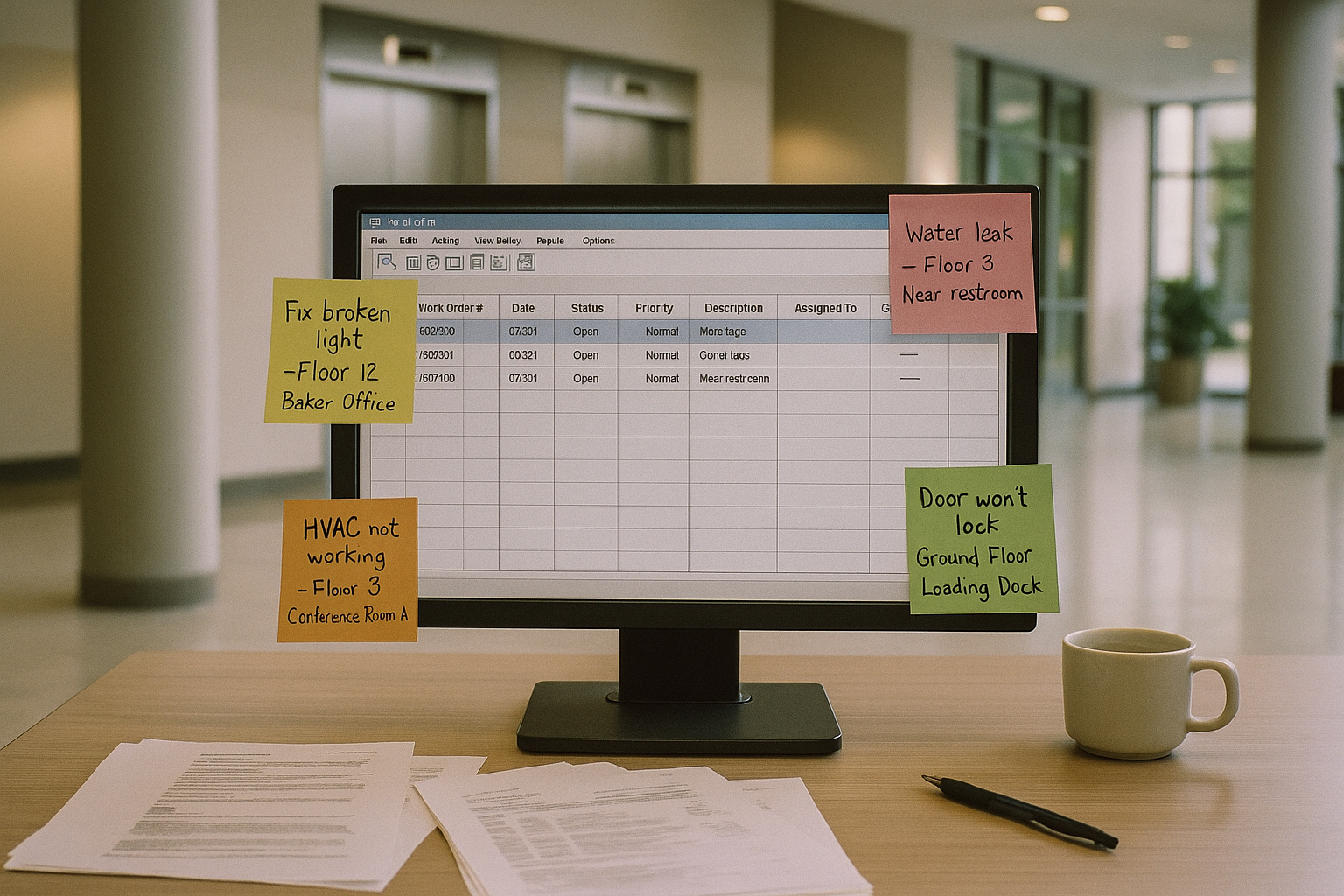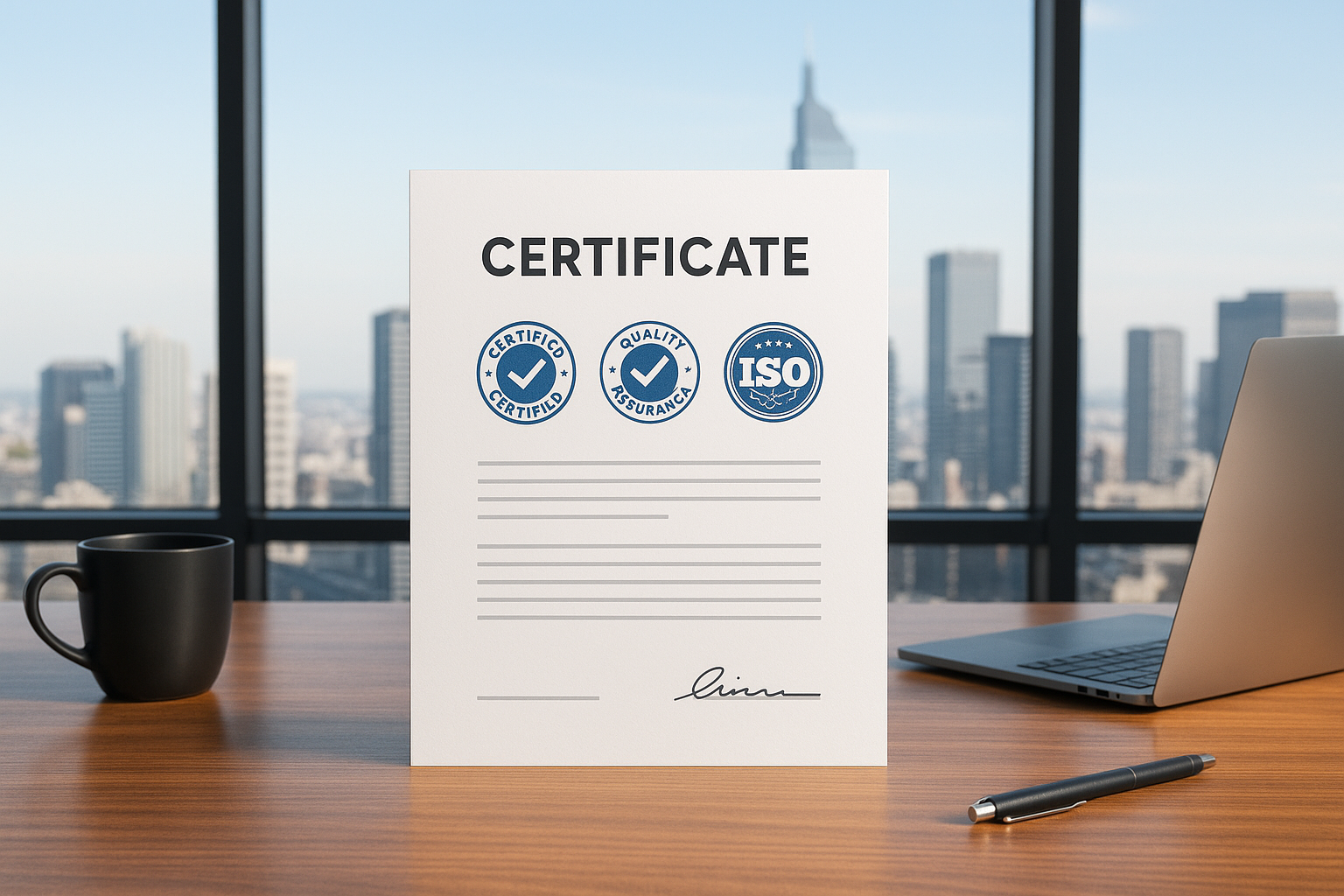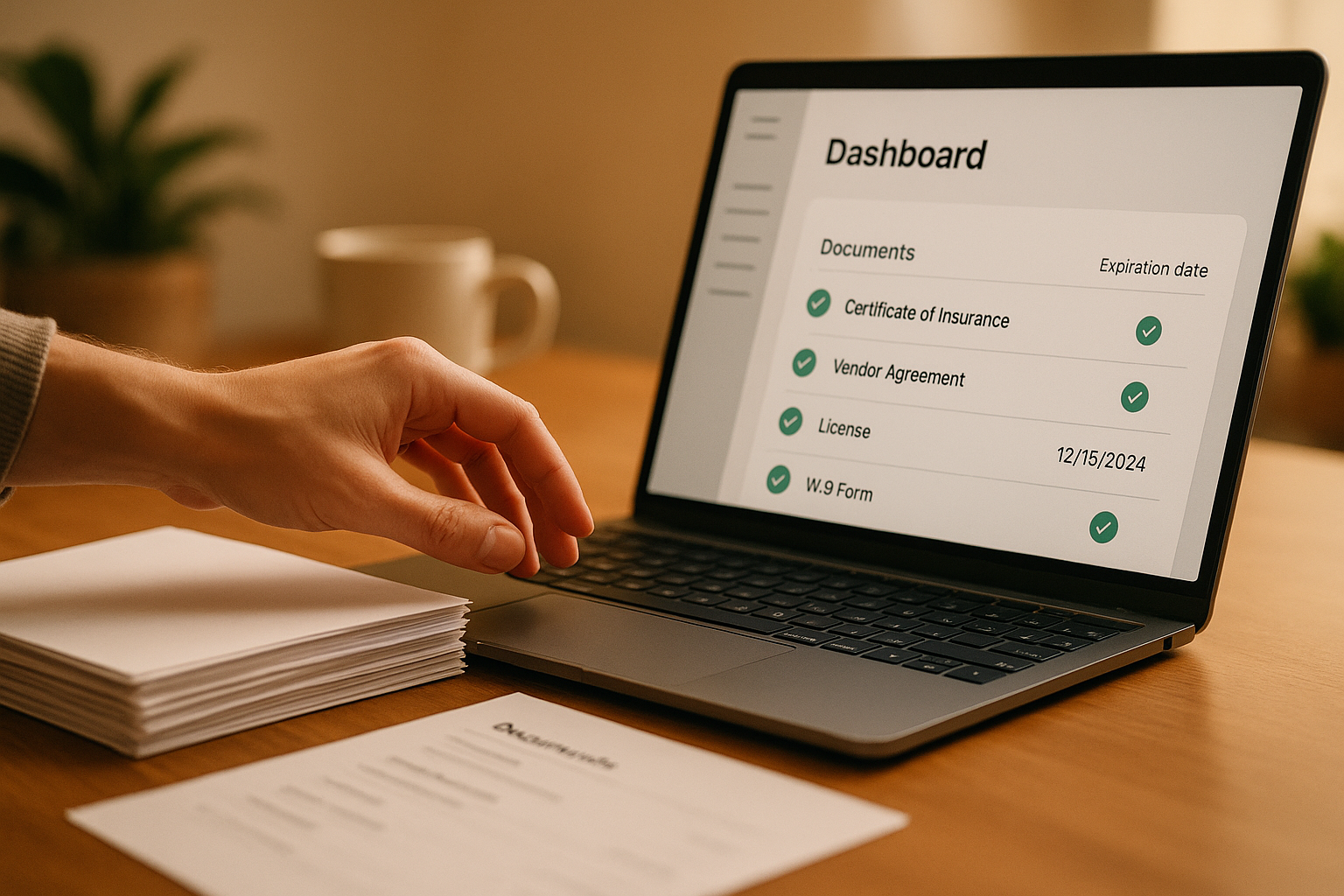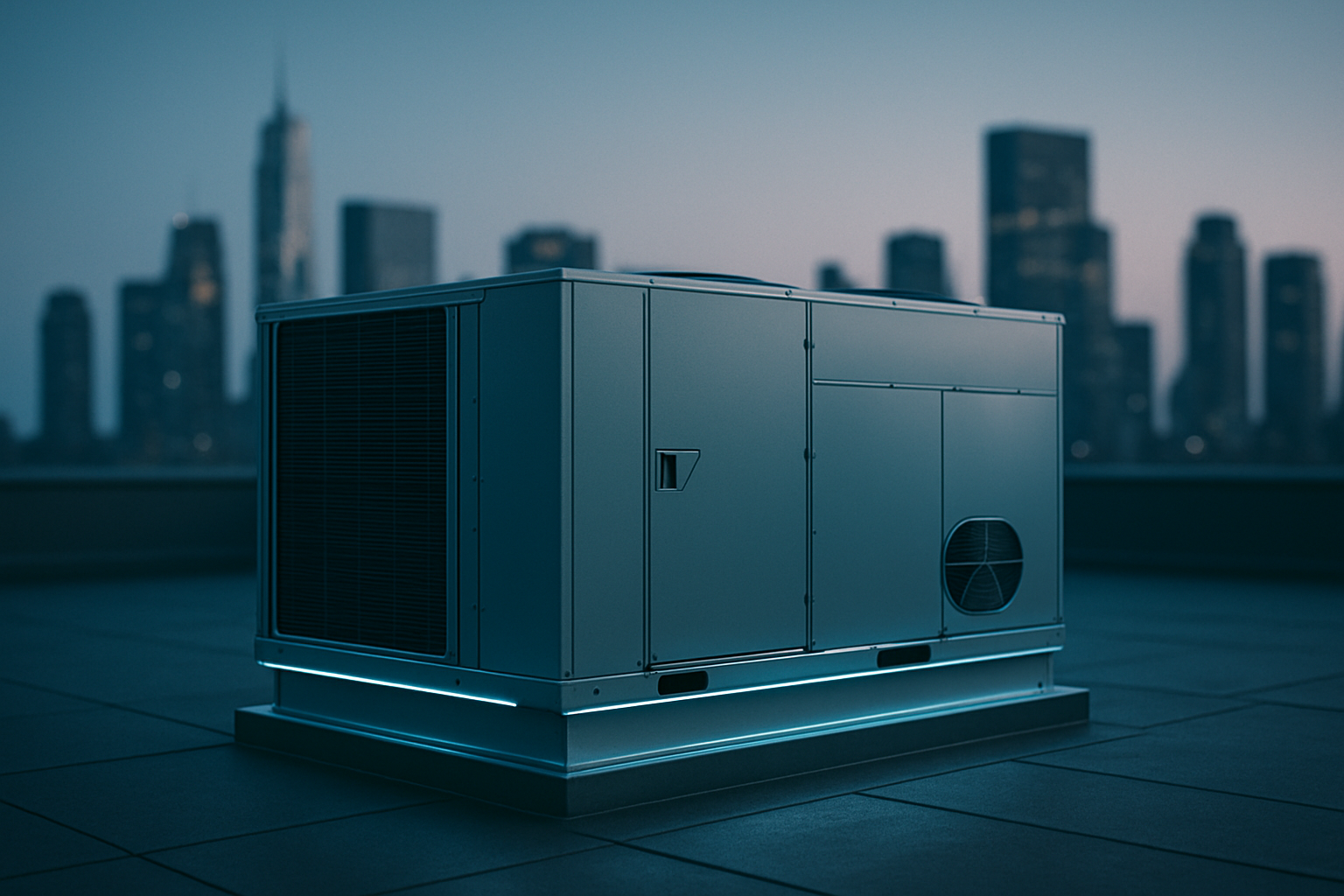You invested in facility maintenance software expecting it to streamline operations and free up your time. Yet here you are, still juggling work orders, emergency repairs, and paperwork as if nothing changed. If this sounds familiar, you’re not alone. Many commercial property managers and building owners implement property maintenance software with high hopes, only to find it’s not delivering the time savings promised. The good news is that this isn’t the end of the road – it’s a problem you can solve.
Why Your Maintenance Software Might Be Slowing You Down
It’s frustrating when a tool meant to simplify your job ends up feeling like just another chore. You might be asking, “Why isn’t my facility maintenance software saving me time?” There are a few common culprits to consider. Often, it’s not that the idea of using software is bad – it’s that the implementation or the tool itself has issues. By identifying these issues, you can take targeted action to turn things around. Let’s break down some typical reasons maintenance software fails to deliver results:
- Underutilized Features and Incomplete Adoption: One big reason is that teams often aren’t using the software to its full potential. In fact, a national survey found 94% of maintenance software users aren’t using their system to its fullest capabilities. That means nearly everyone has room to unlock more value from their software.
Perhaps certain features (like automated reminders or reporting tools) were never set up, or your staff wasn’t fully trained on them. Without proper training and buy-in, even the best building maintenance software becomes an underused tool. It’s like having a powerful machine and only ever using half its functions. The result? You continue doing things manually that the software could handle, wasting time in the process. - Clunky Systems and Poor User Experience: Another common issue is software that’s difficult to use or not suited to your on-the-go work. If the interface is confusing or the system feels “stuck in the 90s,” your team will be reluctant to use it. Some older maintenance platforms are clunky, cluttered, and not optimized for mobile use, which forces technicians to revert to paper or phone calls – erasing any time-saving benefits. You might have experienced the pain of slow-loading screens or having to enter the same data twice because the system didn’t capture it properly. These usability hurdles discourage your staff from embracing the software fully. When your technicians avoid using the tool, you lose the efficiency it was supposed to bring.
- Fragmented Tools and Double Work: Take a moment to count how many different apps, spreadsheets, and systems you use to manage your building’s maintenance. If the list is long, that’s a red flag. One industry survey noted that more workers are now using five or more digital tools every day. While digital tools can boost efficiency, too many separate systems can create chaos. For example, you might log tenant requests in one system, schedule preventive maintenance in another, and track inventory in a spreadsheet. If these tools don’t talk to each other, you end up manually transferring information between them. That means duplicate data entry, higher chances of errors, and time lost switching back and forth. Your facility maintenance software isn’t saving you time if it’s not a central hub – it’s creating extra steps instead.
- Reactive Maintenance Mindset: Ask yourself if you’re mostly putting out fires (reactive maintenance) or preventing them (preventive maintenance). If your software use is limited to logging breakdowns after they occur, you’re missing a huge opportunity to save time. Reactive maintenance means you address issues only when something goes wrong, leading to more emergencies and downtime. Studies have shown that organizations relying heavily on reactive maintenance suffer significantly more unexpected downtime than those using preventive strategies.
In one analysis, companies that leaned on preventive maintenance had 52.7% less unplanned downtime compared to those that were mostly reactive. Fewer surprise breakdowns mean fewer frantic phone calls at 3 AM and less time scrambling for a fix. If your current system isn’t helping you implement a preventative maintenance software approach – like scheduling routine inspections or service reminders – you’re likely stuck in a costly reactive cycle. - Excessive Administrative Tasks: A maintenance platform is supposed to automate and simplify, but sometimes it can feel like it’s generating more work. Perhaps you’re spending hours inputting data, compiling reports, or searching the system for information. If that rings true, it’s a serious time drain. Maintenance technicians, for instance, often complain about too much “screen time” doing admin instead of actual maintenance. Research confirms that technicians can spend over 60% of their day searching for parts, tools, and doing paperwork instead of performing hands-on fixes. Now, if your software isn’t well-organized, it can contribute to that problem. You and your team might be digging through digital files or waiting on slow reports when you could be fixing issues. This wastes time and frustrates everyone involved.
- Lack of Integration and Analytics: In today’s data-driven environment, just having data isn’t enough – you need to make sense of it quickly. Does your building maintenance software give you easy-to-understand reports on maintenance trends, asset performance, or staff workload? If not, you might be sitting on a goldmine of information without reaping any benefits. Another scenario: your maintenance software isn’t linked with other critical systems (like your property management system or purchasing system). When systems operate in silos, you might manually sync information, which is tedious. Modern maintenance platforms should integrate with other software and offer analytics tools to highlight inefficiencies. Without these, you miss chances to optimize schedules or catch small issues before they grow. For example, if you can’t easily see that a particular HVAC unit has needed five repairs this quarter, you might not realize it’s time to consider a replacement – and you’ll keep wasting time fixing it repeatedly.
How to Fix It: Time-Saving Strategies for Facility Maintenance
Often, a few strategic changes can transform a frustrating maintenance process into a smooth, efficient operation. Below are concrete steps you can take to start saving time and getting the most out of your property maintenance software:
- Audit Your Current Maintenance Process: Step back and map out how maintenance tasks flow from start to finish. Identify where delays happen – is it in getting work orders submitted, in approval bottlenecks, or in technicians closing out jobs? Conduct a system audit of your maintenance software usage. Remember that statistic about most people not using all the features? It came from doing exactly this: audits revealed underutilized features in 94% of cases.
By auditing, you might discover your software has capabilities you never turned on. Maybe it can automatically email tenants when their request is received, or perhaps it can generate a preventive maintenance calendar that you haven’t been using. Make a checklist of what the software can do versus what you’re actually doing with it. This gap analysis will show you quick wins – features you can start using immediately to eliminate manual work. If an audit seems daunting, remember it’s an investment in time to save much more time later. Even a simple audit (just you and a notepad, walking through a typical work order) can uncover inefficiencies to address. - Train and Empower Your Team: Software is only as effective as its users. One of the top reasons maintenance departments fail to fully use a CMMS is lack of training. If your technicians and staff aren’t comfortable with the tool, they’ll find workarounds that eat up time (like phone calls or informal chats that never get logged). To fix this, ensure everyone knows how to use the system and understands the benefits.
Organize refresher training sessions, ideally hands-on and scenario-based, so team members can see how the software makes their jobs easier. You might also designate a “super-user” on the team: someone who’s very savvy with the software and can help others day-to-day. Additionally, consider updating your internal processes: for example, make it standard that every maintenance request goes through the software (no side channels). When your team truly embraces the maintenance software, you’ll start noticing faster response times and less slipping through the cracks, which directly saves you time and headaches. - Streamline and Automate Workflows: Use your software’s automation features to cut down on repetitive tasks. Does your system allow recurring work orders? Set them up for routine inspections, filter changes, or any preventive maintenance tasks so they generate automatically on schedule.
Leverage templates if available – many building maintenance software platforms let you create configurable templates and schedules for preventive maintenance and inspections. That means instead of creating a new task from scratch each time, you use a preset template that fills in most details, and you just tweak dates or assignees. Automation also applies to notifications: configure alerts for upcoming maintenance or when a task is overdue.
By automating these reminders, you won’t waste time manually tracking deadlines – the system will nudge you and your team. Another tip is to integrate checklists within work orders so technicians know exactly what steps to follow and can complete tasks more quickly without confusion. The goal here is to let the software handle the routine busywork in the background, freeing you and your staff to focus on actual maintenance work. - Embrace Preventative Maintenance: Shifting from a reactive approach to a proactive one is a game-changer. Preventive maintenance might sound like extra work up front, but it significantly reduces time spent on emergencies in the long run. Use your facility maintenance software to schedule regular inspections and upkeep for critical assets – essentially becoming a preventative maintenance software solution for your building. Why is this worth your time? Because preventing a problem is almost always faster (and cheaper) than fixing one after a breakdown
The stats back this up: moving away from pure reactive maintenance to a preventive strategy led to over 50% less unexpected downtime in studied cases. Imagine cutting those frantic repair calls in half, the time savings for you and your team are huge. To implement this, identify your top trouble-prone equipment and set up maintenance intervals in the software. Most modern systems will let you assign these recurring tasks and even attach procedures or manuals so technicians have all the info they need. Over time, as you build a robust preventive maintenance program, you’ll notice your workload shifting from emergency mode to a more controlled, planned schedule. It might not eliminate every surprise, but it will certainly reduce them. - Reduce Data Clutter and Improve Organization: If finding information in your current system feels like searching for a needle in a haystack, it’s time to declutter. Start by organizing your digital records – ensure every asset, work order, and piece of documentation is stored in a logical place within your software. Create clear categories or tags for work orders (e.g., by building, floor, or equipment type) so you can filter and find what you need quickly. If your software allows document uploads (like manuals, warranties, photos of equipment), take advantage of that.
All your building documents and maintenance logs should live in the software, not in separate filing cabinets or personal desktops. That way, when you need the service history of the rooftop HVAC, it’s just a few clicks away. This kind of organization can dramatically cut down the time spent hunting for information. Also, set up dashboards or summary reports if possible. A quick snapshot that tells you, for example, how many work orders are open, average time to complete tasks, and upcoming scheduled maintenance. With a well-organized system, you’ll spend less time piecing together information and more time making decisions and taking action. - Integrate Systems or Consolidate Tools: Remember the point about using multiple tools? It might be time to consolidate. If your maintenance team uses separate apps for different tasks, explore whether your main maintenance software can absorb those functions. Many modern building maintenance software platforms are all-in-one solutions that include modules for work orders, preventive maintenance, inspections, inventory tracking, visitor management, and more under one roof. For example, instead of one app for visitor check-ins and another for maintenance tickets, a unified system could handle both. The benefit is obvious: one login, one interface, and no more duplicate data entry.
If a full consolidation isn’t feasible, look into integrations. Does your maintenance software integrate with your purchasing or inventory system? Can it sync with an accounting tool for budget tracking? Even simple integrations (like ensuring your tenant request portal feeds directly into your work order system) can save you from manually transferring data. The less you have to jump between systems, the more time you save and the fewer errors you introduce. Plus, an integrated setup means when you update information in one place, it updates everywhere – keeping everyone on the same page effortlessly.
By applying these strategies, you’ll start to see your maintenance operations become more efficient. It’s about working smarter, not harder. Each tip above addresses a specific pain point: whether it’s disorganization, reactive firefighting, or technology that’s not pulling its weight. Implement them one by one, you don’t have to do it all overnight. Even small improvements will compound into significant time savings over weeks and months.
Key Features to Look for in Building Maintenance Software
As you work on fixing your current challenges, it’s worth considering if your existing software is the right fit at all. Sometimes the “fix” might involve upgrading to a better tool, one that truly aligns with the needs of a modern commercial property operation. Whether you plan to optimize your current system or shop for a new building maintenance software, keep an eye out for features that directly address the time-saving issues we discussed. Here are some key features and capabilities that a strong maintenance platform should offer:
- User-Friendly Interface: You want software that your team can pick up quickly without constant headaches. This means an intuitive layout, clear menus, and the ability to enter information without digging through manuals. If the software is powerful, yet easy to use, your team is far more likely to adopt it in their daily routine. When technicians can pull out their phone and log a completed task in seconds, or when you can generate a report with one click, that’s when the software is doing its job.
- Mobile Access and Cloud Connectivity: In the field of building maintenance, work doesn’t happen at a desk. A quality system should offer full functionality on mobile devices like smartphones or tablets. Whether your team is on the rooftop, in the boiler room, or inspecting the parking garage, they should be able to use the software on the spot.
Mobile-friendly, cloud-based software allows real-time updates – a technician can close a work order and upload a photo of the fix right from their phone, and you’ll see it instantly. This eliminates the delay (and double-work) of writing things down to input later. It also means you, as a manager, can check the status of tasks from anywhere. The freedom and immediacy of mobile access can significantly speed up issue resolution and data entry. - All-in-One Platform Capability: We touched on tool fragmentation – the solution is a platform that consolidates functions. The best building maintenance software acts as a one-stop shop for your operations. Look for features like work order management, preventive maintenance scheduling, asset management, inspections, and even extras like visitor management or access control, all within the same system. For example, a robust platform might let you credential building access for vendors, schedule preventive tasks with templates, and run analytics reports all in one place. When you can handle diverse tasks without switching software, you inherently save time and reduce complexity. Plus, all your data resides in one database, giving you a complete picture of your operations at a glance.
- Configurable Preventive Maintenance Schedules: To truly embrace preventive maintenance, your software should support it natively. This means you can set up configurable templates and schedules for recurring maintenance and inspections. Ideally, the system would allow you to pick an asset, choose a maintenance template (for example, “monthly elevator safety check” or “quarterly HVAC servicing”), and then the software automatically generates those work orders at the set intervals. Such features ensure that nothing falls through the cracks. It’s like having a personal assistant who never forgets a single maintenance task – clearly a huge time saver compared to manually tracking dates in a calendar.
- Analytics and Reporting Tools: Data is only useful if it leads to action. High-quality maintenance software should come with powerful analytics and reporting capabilities. This could include dashboards that highlight key metrics (like average repair times, number of open work orders, etc.) and the ability to run custom reports. Why is this important for saving time? Because analytics can pinpoint inefficiencies. By quickly revealing patterns and trends, the software’s analytics help you make informed decisions faster. Instead of guesswork or painstaking manual analysis, you get quick insights that let you deploy your time and resources more effectively.
- Integration and Expandability: No software works in total isolation. The maintenance platform you rely on should play nicely with others, whether that’s your financial software, tenant communication portals, or building automation systems. Seamless integration means, for example, that when a tenant submits a request through a tenant app, it automatically appears as a work order in your system. Or when you mark an asset as “out of service” for maintenance, your energy management system knows to ignore its alerts. These connections prevent you from doing duplicate work in multiple places. Additionally, consider whether the software can scale with you. If you acquire another building or expand your team, can the system easily add users and assets without a massive cost or performance hit? The right building maintenance software should grow with your portfolio and needs.
In short, the better the tool, the easier it is to save time. Thoughtfully designed property maintenance software will naturally eliminate many of the pain points we identified. It will encourage your team to use it (because it’s not frustrating), it will centralize your tasks, and it will provide you actionable intelligence on how to run operations more efficiently. If your current software lacks many of these features, you might consider looking into alternatives. On the other hand, if it does have them but you haven’t been using them, now you know exactly where to focus your efforts.
If your current system isn’t saving you time, it’s holding you back. Whether it’s poor adoption, manual processes, or software that wasn’t built for how you work, you deserve better.
Cove is the only building maintenance software that brings both tenant experience and operations together in one platform. From mobile work orders to preventive maintenance to real-time tenant communication, Cove gives you full visibility and control—all in one place. It’s how modern property teams move faster, stay aligned, and deliver a better experience across the board.

.png)





